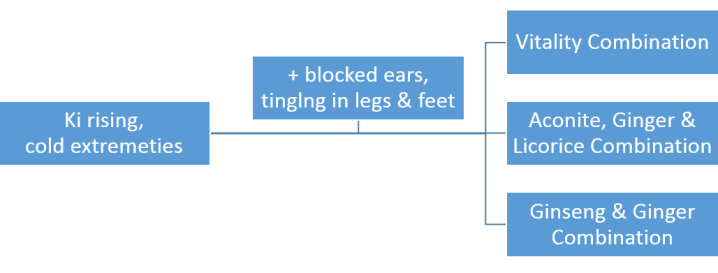Post 5 : (This Post is from the series, 30 March 2020 “Practitioner Update from London”. For complete understanding begin with the 30 March Post and consult each Post in consecutive order)
The Sensory Illness
The Hidden Stage
The Subjective illness
From early-April 2020 medical analysis on Covid-19 patients report three symptoms: loss of appetite, loss of smell, and lethargy. These three are now among the 12 symptoms which epidemiologists list as key indicators (mid- April), also included is “mental confusion”. These are sensory complaints – neurological symptoms – described by the patient as sensory, and difficult to substantiate clinically. From the standpoint of medics measuring pulmonary function in critical care units, these may indicate silent hypoxia, or patients functioning on low oxygen levels.
Kampō’s written texts describe this disease stage; confirmation is through asking questions aimed at sensory symptoms difficult to detect clinically. The patient will say: something “feels wrong”. These affected persons have distinctly similar complaints, although little active disease may be detectable. From the Otsuka texts you can reference these viral complaints via KCG2010.p29, or KCG2017.p61.
Summary of the hidden stage

Subjective symptoms:
- Digestive complaints: difficulty swallowing, nausea, loss of appetite, constipation – or slow processing of food – or diarrhea, feeling bloated, accumulation of intestinal or abdominal gas, frequent urination, abdominal pain.
- Lethargy: patients want to lie down. There may be body aches, and a faint cough can persist.
- Upper body and lower body disharmony: the ki rises up, the extremities feel cold, the head feels stuffy, ears are blocked, loss of taste and smell, and problems with mental clarity.
Take note, Otsuka says; “those who are constitutionally weak may begin the illness in this sensory stage”. See the discussion on flu/viral symptoms, via KCG2010.p53, or KCG2017.p93.
Key subjective symptoms to confirm the hidden stage
In classical Kampō there are three distinct patterns – it is important to recognize these as distinct sensory signs, although it is not essential to identify precisely each stage. Instead choose formula to target the patient complaints as precisely as possible.
Suggested Formula, Pattern 1

Suggested Formula, Pattern 2

Suggested Formula, Pattern 3

Note to practitioners
Sensory signs can be difficult to categorize precisely; choose a formula to target the patient complaints. If one formula is not available to you, do not delay, substitute for another within the Sensory Illness category. There will some improvement.

